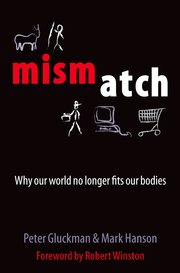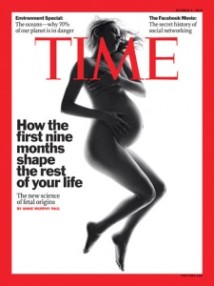Heart disease, stroke, asthma, type 2 diabetes, some cancers and some mental health problems. All preventable. Combined, such chronic diseases kill more than 36 million people every year and this figure is increasing annually and a quarter of these deaths occur before the age of 60. These diseases also cost the global economy more than a trillion dollars a year. So why aren’t we preventing them?
The answer is that we have not been targeting the true time of origin of such diseases – early life. We have already had clues to this origin; childhood obesity is a major risk factor for future chronic disease. Going back even further, babies who experienced slow growth in the womb have thicker artery walls, and both are risk factors for later heart disease.
There are many other pieces of the jigsaw of evidence coming together to support the idea of an early life origin for chronic disease. This has recently crystallized into a rapidly-growing field called “Developmental origins of health and disease” or DOHaD for short. The field developed from the seminal work of the late David Barker who, in the early 1990s, provided evidence for his hypothesis that a fetus who cant get enough nutrition to grow normally is at a higher than average risk for heart disease and other chronic conditions. Importantly, Barker introduced the idea that affected individuals are “mismatched” – they adapt to conditions in the womb that are different from those they encounter after they are born. A good example would be that a child born to a malnourished mother in a developing country today may be exposed to “Western” junk foods as a child and adult, thus overloading a metabolism that had been “programmed” to make the most of every morsel he ate.
 In a nutshell, the idea behind DOHaD is that while the human body is being molded during early life, it is super susceptible to the effect of the environment. Sensitivity is likely to be highest during pregnancy, and depending on the organ, this sensitivity may well persist as far as puberty.
In a nutshell, the idea behind DOHaD is that while the human body is being molded during early life, it is super susceptible to the effect of the environment. Sensitivity is likely to be highest during pregnancy, and depending on the organ, this sensitivity may well persist as far as puberty.
 Such effects of environment on the developing body may not appear at birth or even in childhood. They may lay dormant until they are triggered by further events that an you experience at some later point in life. It is as if each of early environment were a time bomb, each set with a different timer. Some timers may be may be set to a few months, others to years or even decades.
Such effects of environment on the developing body may not appear at birth or even in childhood. They may lay dormant until they are triggered by further events that an you experience at some later point in life. It is as if each of early environment were a time bomb, each set with a different timer. Some timers may be may be set to a few months, others to years or even decades.
So what are these time bombs? Many think the answer lies in epigenetics – the small molecular switches that jump on and off of our genes and control their activity. Changes in epigenetic switches direct our development but there is increasing evidence from studies of animals and humans that adverse early life environment can cause epigenetic changes that are associated with latent disease risk. For example, sixty years after the Dutch Famine during the Second World War, individuals that were in the womb of starving mothers at the time were more likely to suffer from heart disease. These people also carried an epigenetic change. Others have found that epigenetic marks measured at specific genes in early childhood can predict obesity in late childhood. Similar studies have been able to predict which adults may benefit from weight loss interventions.
 Before you go pointing the figure at your mother, however, it is emerging from animal and human studies that your father’s diet or stress may have contribute to your health. Even before you were a twinkle in his eye. There is also evidence that you may be what your grandparents ate too. Maybe some of us have been handed down the effects of food rationing during the Second World War?
Before you go pointing the figure at your mother, however, it is emerging from animal and human studies that your father’s diet or stress may have contribute to your health. Even before you were a twinkle in his eye. There is also evidence that you may be what your grandparents ate too. Maybe some of us have been handed down the effects of food rationing during the Second World War?
The list of time bomb triggers is bigger than just nutrition, though, and includes stress and pollutants. Some say that a combination of an increase in busy lifestyles, consumption of junk food and environmental chemicals, such as those used in the plastics and fire retardant industries, may be driving the current obesity epidemic. Research is ongoing to pursue these links.
No-one quite knows how we may inherit more than a gene sequence from our parents, but it is suspected that Charles Darwin may have guessed the reason over a hundred years ago. He predicted that tiny particles he called gemmules would pass into the sperm (or egg) and onto the next generation. The current ‘smoking guns’ for gemmules are small versions of DNA’s cousin ribonucleic acid. Watch this space.
A further component of inheritance factor points the finger at no-one. Random factors act during pregnancy to influence the size and shape of your placenta and umbilical cords thereby altering the flow of goodies from mum to you.
Coming back to the future, the current expectation in the DOHaD field is that if you know where to look in the human genome, at any particular point in the life span, you can find an epigenetic mark that will predict future disease risk or even response to treatment for that disease. And with DNA sequencing technology getting cheaper, the race is on to find such predictors. Some have even suggested future epigenetic screens in early childhood to enable us provide preventive treatments to those children at highest risk. Effectively treating the sick before they get sick.
But treating with what? Studies with animals have suggested drugs, specifically those that have already been approved for adult diseases such as diabetes. However, evidence is building that diet, exercise, mindfulness/meditation and even bacteria can also change our genes. Interventions involving each of these are currently being trialled in children and adults. There will be successes and there will be failures but imagine a future in which you are prescribed salad, a specially formulated yoghurt, a 10k run and a session of yoga every week. More palatable than a pill?
The DOHaD field is currently going from strength to strength. It has an international society and Australia is fighting above its weight as evidenced by the excellent first national conference held in early April in Perth. As shown by the Gravida consortium in New Zealand, this fast moving field is taking its first steps towards its goal of ending mismatch through education about healthy eating habits and through intervening to help those mismatched individuals who slip through the net.
So next time you feel tempted to eat junk food, think twice – you may be providing your kids and grand-kids with an unwelcome inheritance.
One thought on “The Developmental origins of Health and Disease: you are what you eat and you are what your ancestors ate but it’s never too late to change your genes”